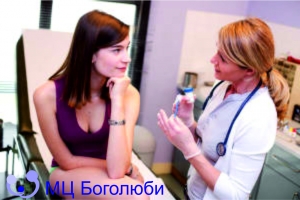Almost every second woman in a certain phase of the monthly cycle today is faced with the signs of a whole group of diseases, united under the general name «mastopathy». It is interesting to know that at the beginning of the last century, scientists even separately isolated a disease that they called a «hysterical tumor», when the breast hardened and became painful, after stress at work or a scandal at home. But, not every breast tumor is «hysterical», and not every «nodule» – is a cause for panic: «Everything is wrong! I have – cancer!» We will deal with this in more detail.
The chest «nodule» is a lesion of the glandular tissue, the occurrence of which may depend on various causes. It’s presence can be detected by chance during palpation of the breast. Undoubtedly, a «nodule» - is a signal whose value cannot be underestimated, but also not to show excessive concern: 90% of cases are benign nodules, such as fibroadenomas and cysts.
Signs
«Nodules» in the breast are felt as compaction of varying consistency and size with respect to the rest of the breast. Their presence can cause pain and may be accompanied by signs such as:
- discharge of blood or fluid from the nipple;
- skin changes, for example, erythema or lymphedema (increasing edema) with the appearance of an «orange peel»;
- feeling of tension;
- changes in the shape or size of the breast.
Benign «nodules» have specific contours, mobile, ovoid and rounded. Depending on the nature, they may have a rigid consistency with a soft constitution or with liquid contents (cyst).
Malignant thoracic «nodes» have poorly defined contours, they usually penetrate into the surrounding gland, are not mobile. Progressive neoplasms of the mammary gland almost always cause retraction of the overlying skin with a change in the shape of the breast. The presence of satellite nodes and lymphadenopathy (enlarged lymph nodes) indicates the spread of the tumor.
Diagnosis
Often the clinical signs of benign and malignant tumors mutually overlap so that you have to resort to a number of clinical trials to identify the nature of the «nodule» with greater accuracy.
The initial detection of a «nodule» in the mammary gland requires a standardized diagnostic path, ranging from a simple medical history to histological analysis. Indications for specialized studies depend on the age of the patient and the data obtained during the Senological examination. The diagnosis that should be ruled out – is breast cancer.
A direct breast examination focuses on palpation of the gland and adjacent tissues. A «nodule» is considered movable if it can be moved with your fingertips.
Ultrasound of the mammary gland allows us to differentiate the «nodules» of a solid consistency from cysts. Mammography is a chest radiograph useful for detecting even minor lesions, microcalcification, or other indirect signs of a tumor. When the structure of the mammary gland is difficult for imaging studies such as ultrasound and mammography, magnetic resonance is shown. Solid «nodules» are examined using a mammogram followed by a radio frequency biopsy.
When the outcome of the above examinations does not adequately clarify the picture, a sample of cells is taken from the affected area. After this, a cytological analysis of the tissue is performed to detect the presence of any neoplastic change. Intervention is carried out under ultrasound guidance.
Therapy
The treatment of breast «nodules» depends on the specific cause and may include various therapeutic strategies. The problem of fibroadeomas is solved by surgical intervention. To relieve the symptoms of fibrocystic changes, painkillers are prescribed, wearing sports bras that can provide adequate breast support.
Prevention
In order to distinguish between benign and malignant lesions and to exclude the presence of a “node” of neoplastic origin, it is necessary to consult a specialist mammologist at the Bogoliuby MC who will prescribe the necessary diagnostic tests for you.
















